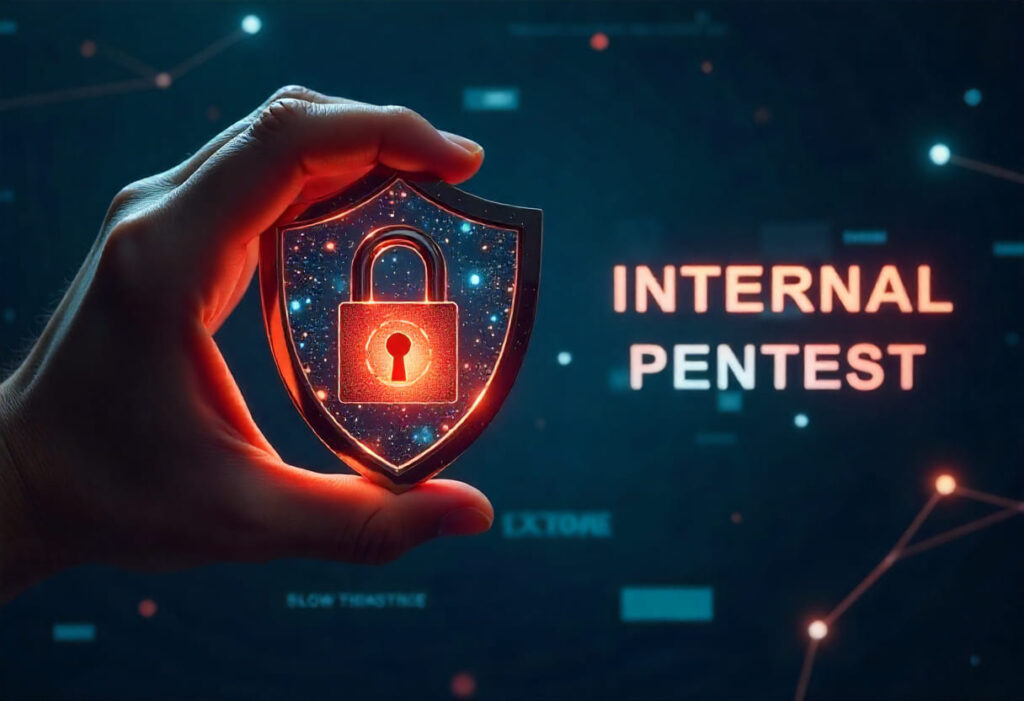
Separating the Facts from the Fiction of Internal Security Testing
For many business owners, an internal pentest can seem like an intimidating or unnecessary process.
We get it. There are plenty of questions, myths, and misconceptions floating around, making it difficult to understand the real value of testing your cybersecurity from the inside.
But we're here to clear the air.
This guide tackles the most common questions and concerns we hear from businesses every day. We will give you the straightforward facts you need to make an informed decision about protecting your organisation.
Your Internal Pentest Questions Answered
Let's start with the basics. What's the difference between an internal and external pentest?
An external pentest tests your perimeter defences from the outside. It simulates an attacker on the internet trying to break into your systems.
An internal pentest starts from inside your network. The test simulates what a malicious employee or an attacker using stolen credentials could do once they are past your initial firewall. It looks at the damage that can be caused.
We have a strong firewall and antivirus. Is an internal pentest really necessary?
Yes. Firewalls and antivirus software are crucial. Unfortunately, they don't protect you from threats that are already inside.
A significant number of data breaches involve stolen credentials, phishing, or other tactics that bypass perimeter defences.
An internal network pentest is specifically designed to find the vulnerabilities that these internal threats could exploit.
Isn't an automated vulnerability scan the same thing and much cheaper?
This is a common misconception. An automated scanner is like a spell checker. It's a great tool for finding common, known errors from a predefined list.
However, manual internal network penetration testing is like having a professional editor review your work. A trained human expert can:
- Understand context,
- Chain together multiple low-risk flaws to create a high-impact breach, and
- Identify business logic vulnerabilities that a scanner would never see.
Isn't an internal pentest just about ticking a compliance box?
While pentests are crucial in meeting compliance requirements like PCI DSS or SOC 2, their actual value goes far beyond that.
A "box-ticking" exercise from an internal pentest checklist can provide a false sense of security.
A proper, in-depth pentest provides real assurance that your defences work. It is a true test of your security posture, not just a paperwork exercise.
Will a pentest disrupt our business or cause downtime?
This is a valid concern, but the answer is no. A professional internal penetration test is carefully planned and executed to avoid disruption. It's not a chaotic attack.
Before the test begins, we work with you to define the scope and establish clear "rules of engagement." Our goal is to find vulnerabilities safely, not to break your systems or interrupt your operations.
What kind of information or access do you need?
This depends on the threat scenario we are simulating. An internal pentest can be performed with different levels of initial access.
It can range from a zero-knowledge approach (like a guest on your Wi-Fi) to providing our testers with a standard user account to simulate a compromised employee.
We will discuss these options with you and agree on the best approach for your specific goals.
My company is small. Do we actually need one?
Yes! Attackers often view small businesses as attractive targets precisely because they assume they have weaker security controls.
A security breach can be even more devastating for a small company's finances and reputation. The size of your company doesn't change the value of your data. And protecting personal data applies to everyone.
An internal pentest is a scalable investment in preventing a catastrophic loss.
Honestly, is an internal pentest actually worth the investment?
Absolutely. It is one of the most effective ways to understand your true security risk.
An internal network pentest moves beyond theoretical plans. It shows you exactly how an attacker could move through your network and what they could access. This allows you to fix the most critical issues before they are exploited in a real breach.
Not to mention, a single data breach can cost millions in fines. Then, there are also recovery costs and reputational damage. Compared to that, the price of a proactive pentest is a small investment in risk management.
It's about spending a little now to prevent a potential catastrophe later.
OK, but why should we hire an external company like 7ASecurity?
Your internal IT team is fantastic at building and maintaining your systems. Unfortunately, this very familiarity creates blind spots.
They know how things should work, which can make it difficult to see how an attacker might break them.
An external expert from 7ASecurity brings a fresh perspective and a dedicated attacker's mindset.
Get the Facts, Not the Fiction
An internal pentest is one of the most effective ways to understand and improve your true security posture. Don't let myths or misconceptions prevent you from taking this crucial step.
Our comprehensive service will give you the clear, actionable insights you need to protect your organisation from the inside out.
Let's replace your security questions with confident answers.

